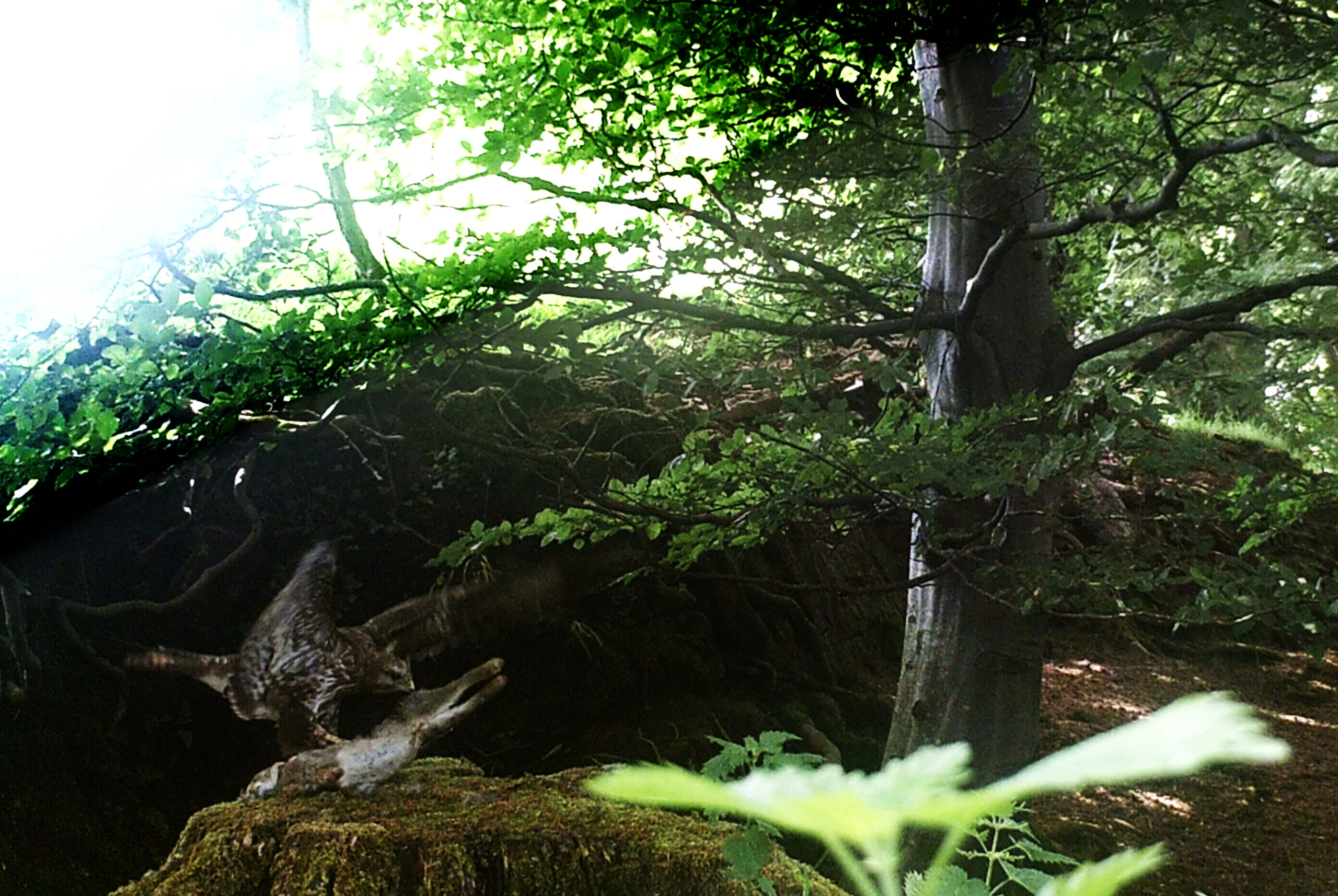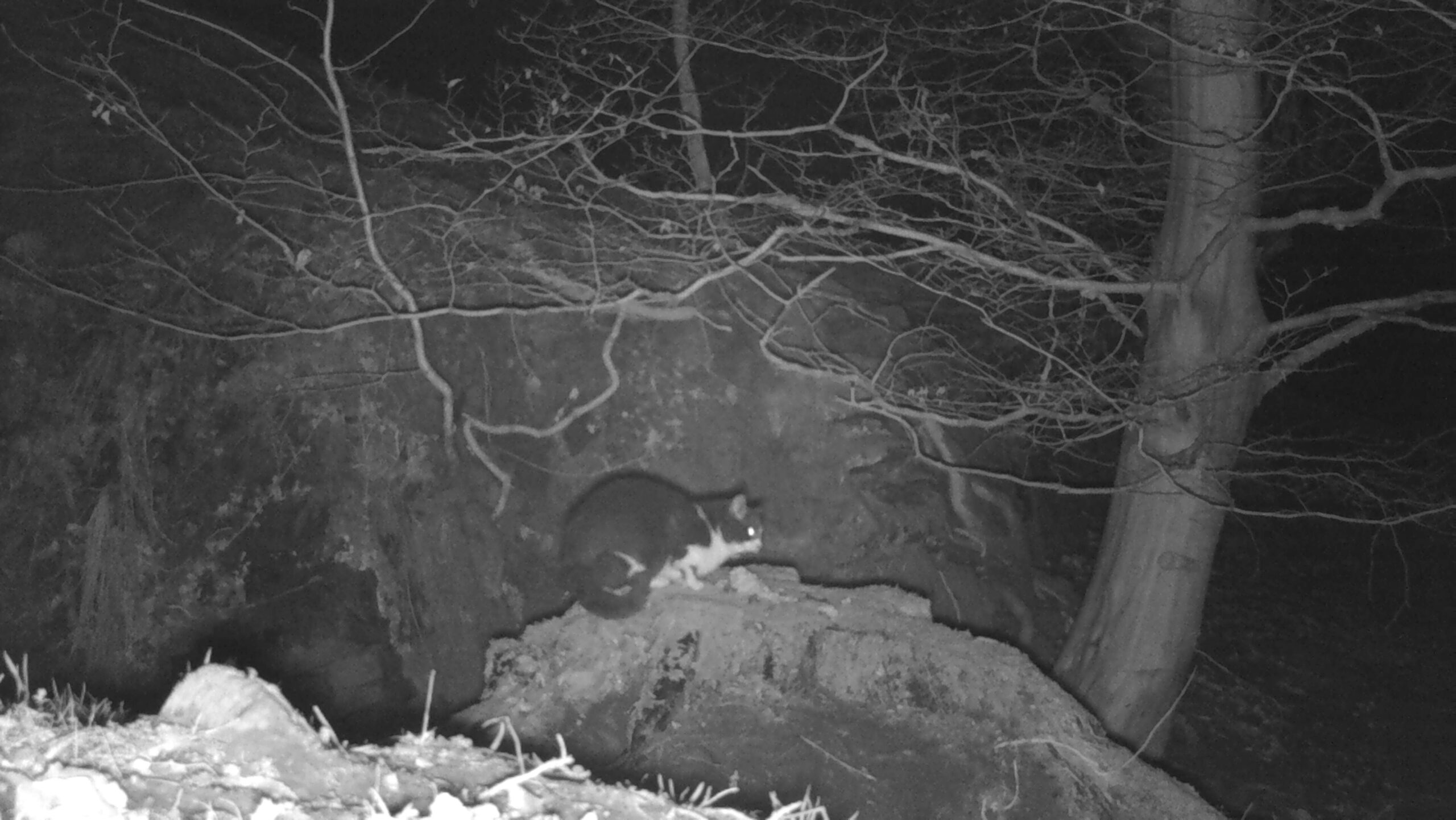I finally hit pay-dirt with my cheap-as-chips trail cam. I bought the thing out of boredom a while ago and have used it in fits and starts as-and-when the mood took me, usually over in a small wood behind my house. The camera I bought was less than forty quid and the old adage probably holds true that you get what you pay for. However, this not withstanding, the fact that you can get a piece of kit that will sit photographing whatever moves – both night and day – for several days for such a small price is quite impressive. A decade ago the cost would have been several hundreds of pounds. The camera betrays its bargain basement status in a number of ways (cheap and crude settings interface etc.) but I still cannot really complain as I am not trying to win any awards, just interested in seeing what is going on down in the woods wildlife-wise.

I usually point the camera at an old stump next to a small beck and bait it with various things, such as cat food or nuts, to encourage animals to investigate. Over the course of this year, to my disappointment, my most frequent captures have been local cats (including Wilf, my own feline co-habitee) seemingly happy to consume decaying cat food, hedgehogs, crows and, most depressing of all, the sheep and lambs that run in the fields surrounding the wood that occasionally make their way into the wood to ensure no blade of grass is left unconsumed. However, the use of a recently expired rabbit as bait changed my luck and this is what is got – dozens of photos of a young buzzard along with some grainy video.
Now the quality of the camera’s imaging is not particularly good, especially the video, but thanks to the power of open-source software, a few minutes with GIMP (a freebie Photoshop-type program) turned my washed out original stills into something a little more engaging. No tomfoolery, however, just working with a few settings, a mask and a bit of sharpening and despeckling and the results are alright - every pixel is real and in the right place. Not stunning admittedly, but pleasant enough. For the video above I experimented with Kdenlive (Linux version), an open source video editor that I had not used previously. A bit of fiddling with the colour, zoom and image noise settings gave me some OK-ish video. I used this specific editor due to it being lightening fast on my somewhat creaky old PC and I was pleasantly surprised. If I had been in Widows using VSDC, my usual editor, things would have taken much longer.

I was expecting to see a much greater range of species on my camera, however. Perhaps a fox or a stoat investigating the bait, or a greater variety of birds taking the nuts or even one of the local red squirrels. The takeaway from all this is probably that a small wood surrounded by sheep on all sides is not likely to be a haven for wildlife. If the wood was fenced off from the sheep perhaps I would have seen more – the sheep leave very little in their wake except desolation. Whatever the case, messing around with this camera has just reinforced the already apparent notion that wildlife in the UK just ain’t up to much in many places. But, on a positive note, the cost of monitoring wildlife in such a manner is now so low that it is within the reach of all and that has to be a good thing.
